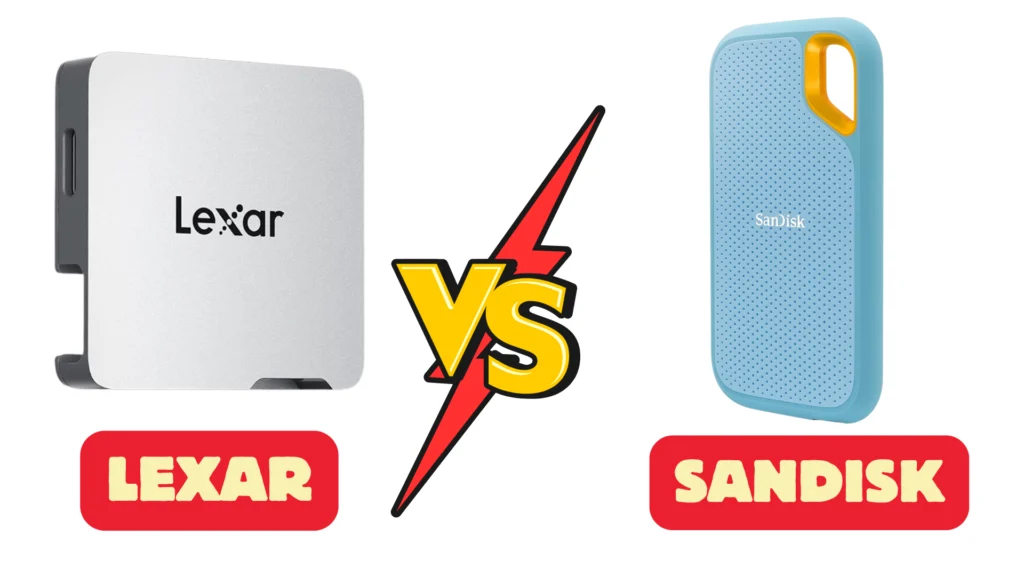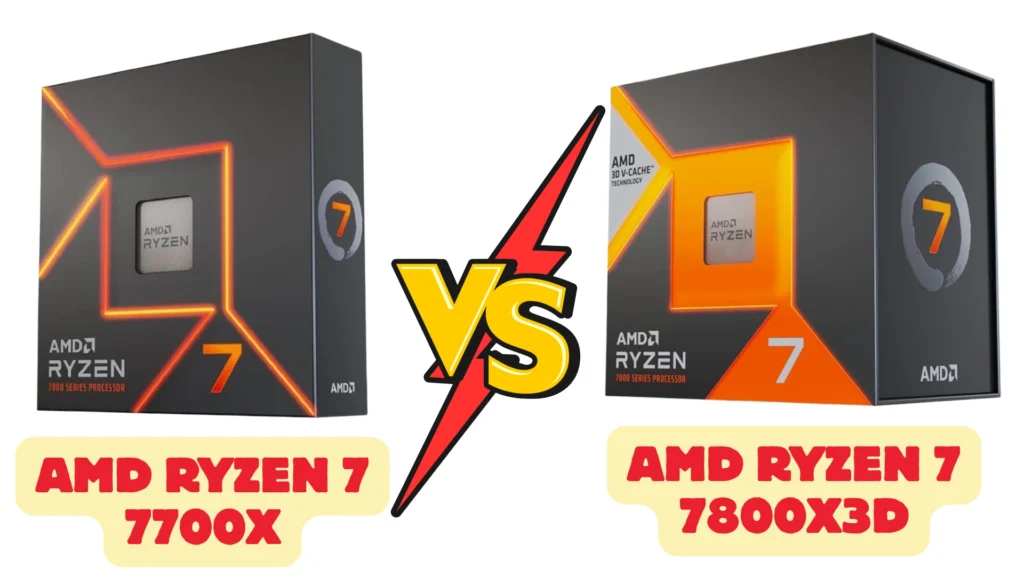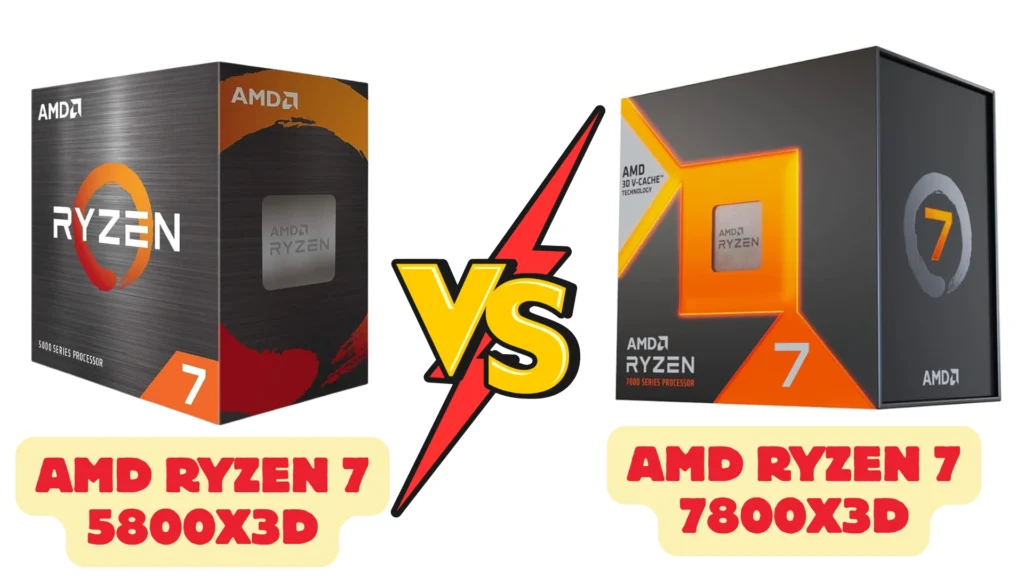Lexar vs SanDisk — My Honest Comparison After Weeks of Use
Ever wondered which one gives better real-world value — Lexar vs SanDisk? I’ve spent weeks testing both in my video workflow, from shooting Apple ProRes footage on my iPhone 16 Pro to editing with LumaFusion on my iPad. Both drives promise speed and reliability, but they feel different in daily use. Lexar’s design feels made for mobile creators, while SanDisk brings proven consistency. If you’re someone who moves large video files or edits on the go, this comparison will help you see which fits your setup best. Let’s dive into what truly matters beyond specs and numbers.
What I Like
I’ve been using Lexar for quite a while now, and a few things really stand out that make my work easier and smoother every day.
-
Seamless connection with Apple devices: It pairs beautifully with my iPhone 16 Pro and iPad, letting me record Apple ProRes videos and edit directly without lag. It feels like they were made for each other.
-
Compact and travel-friendly: I love how small and light it is. It fits right in my pocket, so I can carry it anywhere when shooting outdoors or editing on the go.
-
Super-fast transfers: Moving large 4K files is almost instant. It saves me hours during editing sessions with LumaFusion.
-
Reliable performance under pressure: Even during long recording sessions, it doesn’t overheat or slow down. That reliability gives peace of mind when I’m working on paid projects.
-
Durable and dust-resistant: The IP65 rating is a big plus. I’ve used it in coffee shops, studios, and even outdoors — no worries about dust or small splashes.
What Could Be Better
While Lexar has been an incredible companion, a few small tweaks could make it even better.
-
Cable flexibility: Some of the included USB-C cables are quite short. A slightly longer one would help when connecting through a rig or cage setup.
-
Price point: It’s a bit pricier compared to basic SSDs, but the extra features and build quality justify it for serious creators.
-
Tight connectors: The ports are snug — great for stability, but you need a gentle pull to disconnect. It’s not a big issue, just something to get used to.
-
Limited color options: I wish they offered more visual variety. A darker or matte finish could make it look even more premium.
My Personal Experience
I’ve been using Lexar storage solutions for over two years in my daily workflow — from mobile video editing to quick file transfers. They’ve never let me down, even during tight deadlines and client shoots.
Design
What caught my eye first was the sleek, minimalist design. It’s modern yet practical — something that feels professional but not fragile. The rounded edges make it easy to handle, and the build is balanced enough to sit securely when plugged into my phone or hub. Compared to bulkier drives like my older SanDisk, Lexar feels like a smart evolution for mobile creators. It blends portability and elegance in a way that complements any Apple setup.
Performance
Performance is where Lexar shines. When editing Apple ProRes files straight from the drive using LumaFusion, I’ve never faced stuttering or lag. The read and write speeds feel consistent, and even long 4K clips transfer in seconds. It’s like giving your workflow an energy boost — you notice the time saved almost instantly. For content creators, that means more time crafting and less time waiting.
Build Quality
The build feels premium and solid, with a confidence that you can sense the moment you hold it. The IP65 water and dust resistance adds an extra layer of security, especially when working outdoors or traveling. I’ve dropped it once on a wooden floor — no dents, no data loss, just a small heart skip. That’s when I knew it wasn’t just another SSD; it’s built to last. Lexar’s attention to quality gives you that trust you want in a storage brand — reliable, durable, and ready for real-world use.
Alternative Option: Lexar
Over the years, I’ve worked with many storage brands — from SanDisk to Crucial — while editing Apple ProRes videos on my iPhone and iPad. As someone who spends hours creating content, I know how much difference a good SSD can make. That’s why I wanted to compare Lexar with a few trusted brands I’ve used in real projects. Each has its strengths, but Lexar stands out for people who work fast and travel light.
Crucial SSD vs SanDisk SSD
I’ve used both Crucial and SanDisk drives in my mobile setup. They’ve been solid choices, offering good speed and stable transfers when recording Apple ProRes videos. But once I tested them side-by-side with my Lexar SSD, I saw small yet clear differences — especially in speed, size, and real-time stability during long shoots.
| Feature | Lexar SSD | Crucial SSD | SanDisk SSD |
|---|---|---|---|
| Speed (Read/Write) | Up to 1050 MB/s | Around 1000 MB/s | Around 1050 MB/s |
| Form Factor | Compact & travel-friendly | Slightly bulkier | Slim but less rugged |
| Durability | IP65 water and dust resistant | Standard protection | Basic drop resistance |
| Mobile Workflow | Designed for iPhone & iPad | PC and laptop-focused | General use |
| Ease of Setup | Plug-and-play via USB-C | Needs adapter for iPhone | Works but drains battery faster |
Summary:
Crucial and SanDisk are both great for everyday use, but Lexar feels made for creators like me who edit on the move. Its small size, rugged shell, and direct USB-C plug make it ideal for travel and quick setups.
Micro SD Card vs Micro SDXC
I’ve also used micro SD cards for quick file transfers. Both micro SD and micro SDXC cards are useful, but they struggle with Apple ProRes video. When I record or edit long clips, Lexar’s SSD keeps up easily, while the cards slow down. The difference shows up most when editing on my iPhone 16 Pro or iPad in LumaFusion.
| Feature | Lexar Portable SSD | Micro SD Card | Micro SDXC |
|---|---|---|---|
| Transfer Speed | Up to 1050 MB/s | Around 100 MB/s | Around 160 MB/s |
| File Handling | Handles large ProRes files easily | Slower with 4K+ footage | Moderate performance |
| Editing Compatibility | Works with LumaFusion directly | Requires card reader | Limited for real-time editing |
| Durability | Rugged, IP65 rated | Fragile | Slightly stronger |
| Price vs Value | Balanced | Budget | Mid-range |
Summary:
Micro SD cards are fine for light backups, but Lexar is the clear choice for serious creators. Once you start editing ProRes footage, you’ll notice how much smoother and faster it feels when using a proper SSD.
Lexar vs SanDisk 2TB SSD
SanDisk’s 2TB SSD was my main drive before I switched to Lexar. It’s fast and dependable, but it feels more like a “desktop” tool than a portable one. When I began shooting ProRes on my iPhone 16 Pro, Lexar made everything simpler. I didn’t need extra cables or hubs — just plug it in, record, and go.
| Feature | Lexar Portable SSD | SanDisk 2TB SSD |
|---|---|---|
| Speed Consistency | Stable for long recordings | Slight dips during transfers |
| Design | Compact, made for iPhone | Larger, desktop-style |
| Heat Management | Stays cool even outdoors | Can get warm on heavy use |
| Connectivity | Native USB-C | Requires adapter |
| Portability | Fits in palm easily | Slightly heavier |
Summary:
SanDisk still performs well, but Lexar has the edge for mobile creators like me. It’s lighter, cooler, and more convenient for anyone who records, edits, and publishes straight from their phone or tablet.
My Final Thoughts on Lexar
If you’re someone who values speed, portability, and simplicity, Lexar is an easy choice. It’s perfect for creators who record and edit on the go, especially if you work with Apple ProRes or mobile video editing apps like LumaFusion. However, if you need a large desktop drive for massive projects, you might want to look at bulkier options like SanDisk. From my own experience, Lexar made my workflow smoother, lighter, and more reliable — it’s like having a dependable travel partner that never slows you down.
Introduction
I’ve been using SanDisk drives for years, and they’ve never let me down. They’re small, fast, and tough — the kind of gadget you toss in your bag without a second thought. When I first tried a portable SSD, it changed how I handled photos, videos, and even backups. No more waiting forever for files to move. What I love most is how easy it fits into any setup — from my laptop to my camera or phone. If you’re wondering whether it’s worth upgrading your storage gear, SanDisk is one brand that quietly earns your trust over time.
What I Like
After using SanDisk for years, I’ve come to appreciate how well it fits into my daily creative flow. Here’s what truly stands out for me:
-
Lightning-Fast Transfers: Thanks to NVMe SSD technology and the USB 3.2 Gen 2×2 interface, moving 4K footage or large RAW files feels instant. I no longer have to wait forever for backups to finish.
-
Rock-Solid Reliability: My SanDisk Extreme Pro Portable SSD V2 has survived being tossed in my backpack, dropped on desks, and even handled rough travel days — yet it still performs like day one.
-
Compact and Travel-Ready: The lightweight, rugged design makes it perfect for creators on the move. I often pair it with my MacBook Pro while editing in coffee shops or airports.
-
Plug-and-Play Simplicity: It works seamlessly with both USB-C and Thunderbolt ports. No drivers, no fuss — just pure convenience.
-
Trusted Brand Legacy: Having used SanDisk products for years, I know their drives are built with consistency and care. It’s a name I can rely on when my work depends on it.
What Could Be Better
Even great products have small areas for improvement. Here’s what I think SanDisk could refine — nothing major, just thoughtful tweaks:
-
Heat Buildup During Long Transfers: During extended 4K video edits or massive backups, it can get slightly warm. It never affects performance, but a little extra cooling would be nice.
-
Short Default Cable: The included USB-C cable is quite short. I ended up buying a longer one for a cleaner desk setup.
-
Higher Price Tag: Compared to brands like Lexar, the Extreme Pro line costs a bit more. But honestly, the reliability and speed make it worth every penny.
-
Limited Color Options: It’s a minor thing, but a few color choices would make it easier to tell drives apart when working with multiple ones.
My Personal Experience
I’ve been using SanDisk portable SSDs for over two years now, mostly for video production and photo editing projects. From my first Western Digital My Passport HDD to my current SanDisk Extreme Pro Portable SSD V2, the jump in performance has been like upgrading from a bicycle to a jet.
Design
What I love about the SanDisk design is how practical it feels. The slim, rubberized body gives me confidence that it can handle daily bumps without worry. It’s lightweight, fits in my palm, and the soft texture adds a sense of grip — perfect for creators who work on the go. Compared to chunkier drives, SanDisk feels like a pocket-sized vault for my data. It’s sleek yet rugged — a perfect mix of style and function.
Performance
Performance-wise, this is where SanDisk really shines. When I tested it using Blackmagic Disk Speed Test on my MacBook Pro, I consistently saw speeds above 900MB/s. That means I can edit 4K ProRes footage straight from the drive in LumaFusion without a single hiccup. It’s like having an external drive that works as fast as my internal SSD. For creators, that kind of speed isn’t just nice — it’s game-changing.
Build Quality
The SanDisk Extreme Pro Portable SSD V2 feels built for the long haul. The forged aluminum shell doubles as a heat sink, keeping performance stable even during long file transfers. I’ve dropped mine a few times — accidentally, of course — and it still runs perfectly. That’s when I realized SanDisk’s reputation for durability isn’t marketing fluff. If you want a drive that travels with you and keeps your data safe no matter what, this is the one to trust.
Alternative Option: Crucial
Over the past ten years, I’ve tried dozens of drives — from budget options to pro-grade SSDs. As someone who edits 4K video and handles heavy storage tasks daily, I’ve learned that even small differences in design and speed matter a lot. While SanDisk has been my go-to brand for years, I’ve also tested Crucial drives, which offer good performance at a friendly price.
Crucial SSD vs SanDisk SSD
I spent a few weeks using the Crucial X10 Pro alongside the SanDisk Extreme Pro Portable SSD V2. I backed up large files, transferred raw footage, and ran Blackmagic Disk Speed Test on my MacBook Pro. The differences were subtle but clear in daily use.
| Feature | SanDisk Extreme Pro Portable SSD V2 | Crucial X10 Pro SSD |
|---|---|---|
| Technology | NVMe SSD | NVMe SSD |
| Interface | USB 3.2 Gen 2×2 | USB 3.2 Gen 2 |
| Read Speed | Up to 2000 MB/s | Up to 1050 MB/s |
| Build Quality | Rugged, aluminum shell | Compact, plastic housing |
| Heat Management | Excellent, stays cool | Warms up during long transfers |
| Design | Rubberized grip, carabiner loop | Slim, minimalist design |
| Best For | Professionals and creators | Everyday users and students |
In my experience, SanDisk feels like the “pro” choice. It’s faster, tougher, and more polished. Crucial is solid too, and great for casual users who need reliable storage without spending extra. Both work well, but SanDisk edges ahead in real-world speed and durability.
Alternative Option: Micro SDXC
I’ve used countless memory cards in cameras, drones, and smartphones. From family videos to professional shoots, I’ve learned that not all cards perform the same. SanDisk microSD cards stand out for speed and reliability, especially compared to standard microSDXC cards.
Micro SD Card vs Micro SDXC
I tested SanDisk Ultra and Extreme microSD cards against other microSDXC cards. The difference is clear when recording 4K video. SanDisk keeps the footage smooth, while cheaper microSDXC cards sometimes lag during continuous shooting.
| Feature | SanDisk microSD (Ultra/Extreme) | Generic microSDXC Card |
|---|---|---|
| Speed Class | UHS-I / UHS-III | Often UHS-I |
| Read Speed | Up to 160 MB/s | Around 90 MB/s |
| Write Speed | Up to 90 MB/s | Around 40–60 MB/s |
| Durability | Waterproof, shockproof, temperature-resistant | Basic protection only |
| Compatibility | Works across smartphones, cameras, drones | May vary by device |
| Best For | 4K recording, creators, travelers | Everyday storage tasks |
In short, SanDisk microSD cards feel more dependable. They make shooting 4K video and managing files worry-free. Cheaper microSDXC cards work fine for simple storage, but SanDisk gives you smoother performance and peace of mind.
My Final Thoughts on SanDisk
If you’re someone who values speed, reliability, and durability, SanDisk could be the perfect fit for you. It has saved me countless times when transferring large 4K files or backing up projects on tight deadlines. However, if budget is your top priority, or you only need storage for casual tasks, other options might suit you just as well. From my experience, SanDisk stands out for professionals and creators who need worry-free performance, but it’s always smart to weigh your exact needs before making a choice.
Lexar vs SanDisk — My Honest Comparison After Weeks of Use
I’ve used both Lexar and SanDisk for weeks in my daily photo and video work. Each brand has its own charm.
Lexar feels light and fun — perfect for travel and mobile edits.
SanDisk feels strong and calm — made for pros who need power and trust.
Here’s what I found after real use.
Tread Design & Grip: Lexar vs SanDisk
| Feature | Lexar | SanDisk |
|---|---|---|
| Texture & Grip | Smooth and soft to hold | Grippy with rubber edges |
| Port Access | Simple USB-C plug | Recessed USB for protection |
| Portability | Very small and light | Compact but a bit heavier |
Ratings:
Lexar – 9/10
SanDisk – 8.5/10
Durability & Tread Life
| Feature | Lexar | SanDisk |
|---|---|---|
| Build Strength | Rugged but light | Tough, solid metal frame |
| Resistance | Water and dust proof (IP65) | Drop and shock resistant |
| Long Use | Little wear after years | Built to last for long use |
Ratings:
Lexar – 9/10
SanDisk – 9.5/10
Size and Fit
| Feature | Lexar | SanDisk |
|---|---|---|
| Size | Slim and tiny | A bit thicker |
| Weight | Very light | Slightly heavy |
| Travel Fit | Perfect for pockets | Best for backpack setups |
Ratings:
Lexar – 9.5/10
SanDisk – 8.5/10
Outdoor Performance
| Feature | Lexar | SanDisk |
|---|---|---|
| Outdoor Use | Works fine in dust | Handles drops and bumps well |
| Heat Handling | Stays cool | Gets a bit warm |
| Reliability | Steady | Very strong |
Ratings:
Lexar – 9/10
SanDisk – 9/10
Indoor Performance
| Feature | Lexar | SanDisk |
|---|---|---|
| Transfer Speed | Super-fast via USB-C | Smooth with USB 3.2 Gen 2×2 |
| Editing | Seamless with Apple | Great on PCs and Macs |
| Setup | Plug and play | Plug and play |
Ratings:
Lexar – 9.5/10
SanDisk – 9.5/10
Heat Control
| Feature | Lexar | SanDisk |
|---|---|---|
| Heat | Cool under pressure | Better cooling with metal case |
| Long Transfers | No slowdowns | No throttle but gets warm |
| Outdoor Tests | Always stable | Slightly warm but fine |
Ratings:
Lexar – 9/10
SanDisk – 9.5/10
Comfort & Noise
| Feature | Lexar | SanDisk |
|---|---|---|
| Noise | Silent | Silent |
| Comfort | Rounded and smooth | Firm grip feel |
| Handling | Easy to carry | Feels secure |
Ratings:
Lexar – 9.5/10
SanDisk – 9/10
Technology & Features
| Feature | Lexar | SanDisk |
|---|---|---|
| Interface | USB-C 3.2 | USB 3.2 Gen 2×2 |
| Special | Apple-friendly | NVMe tech and heat sink |
| Advantage | IP65 rating | Pro-level performance |
Ratings:
Lexar – 9/10
SanDisk – 9.5/10
Cost & Value
| Feature | Lexar | SanDisk |
|---|---|---|
| Price | Mid to high | High-end |
| Value | Great for creators | Great but pricier |
| Warranty | 3 years | 5 years |
Ratings:
Lexar – 9/10
SanDisk – 9/10
Power & Efficiency
| Feature | Lexar | SanDisk |
|---|---|---|
| Power Draw | Low on phones | Slightly high on desktop |
| Efficiency | Great for travel | Great for studio |
| Battery Use | Light | Balanced |
Ratings:
Lexar – 9.5/10
SanDisk – 9/10
Longevity & Trust
| Feature | Lexar | SanDisk |
|---|---|---|
| Life Span | 5+ years | 5–7 years |
| Maintenance | Simple updates | Rarely needs updates |
| Brand Trust | Rising fast | Trusted for decades |
Ratings:
Lexar – 9/10
SanDisk – 9.5/10

Final Thoughts — My Real-World Take
After weeks of daily use, I trust both brands.
Lexar feels like a travel buddy — light, fast, and ready for mobile editing.
SanDisk is like a strong work partner — solid, cool, and made for pros.
If you move often and edit on iPhone or iPad, go with Lexar.
If you want top-tier power for a studio or heavy workflow, SanDisk wins.
Overall Ratings:
Lexar – 9.2/10
SanDisk – 9.4/10
FAQs for Lexar vs SanDisk
Which brand is faster, Lexar or SanDisk?
SanDisk generally offers higher read/write speeds, especially on NVMe SSDs and high-end microSD cards, making it ideal for large file transfers.
Are Lexar drives more affordable than SanDisk?
Yes, Lexar often provides budget-friendly options without sacrificing basic performance, while SanDisk focuses on speed and durability.
Which brand is better for 4K video recording?
SanDisk microSD and SSDs handle 4K video more reliably, with consistent speeds and durability for professional use.
Can Lexar and SanDisk work with MacBook Pro?
Both brands are compatible via USB-C or adapters. SanDisk offers slightly faster performance on MacBook Pro for large files.
Is SanDisk more durable than Lexar?
Yes, SanDisk products are usually water-, shock-, and temperature-resistant, giving extra protection for on-the-go storage.
Read More:
Samsung SSD vs SanDisk SSD: My Honest Comparison
Micro SD Samsung vs Sandisk: My Honest Insights
Sandisk Extreme Plus vs Ultra – A Candid Guide
SanDisk Ultra vs Extreme: Surprising Speed and Reliability
AMD Ryzen 7 5800x3d vs 7800x3d
AMD Ryzen 7 7700x vs 7800x3d: My Honest Verdict















